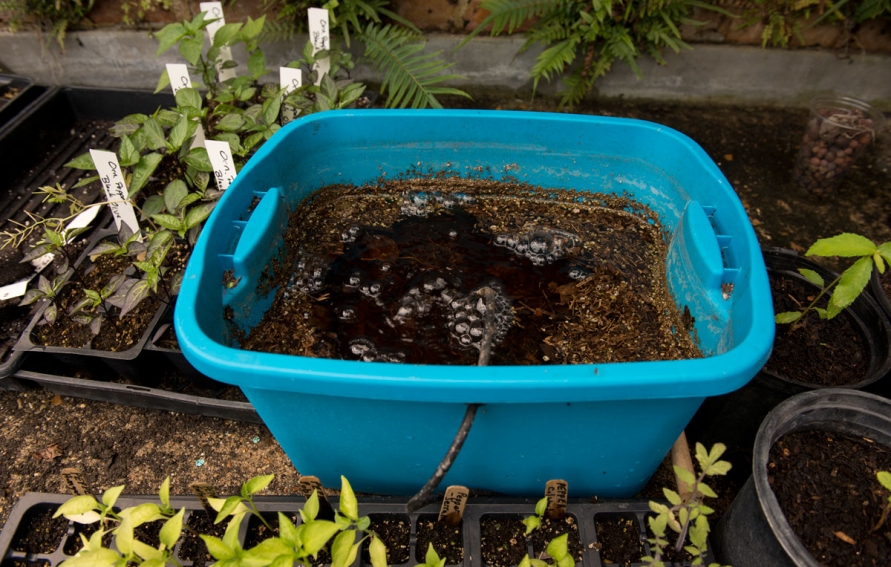Ingredients
- High-quality compost *
- 2 (5-gallon) buckets
- Air stone
- At least 3 feet of ½-inch tubing
- Strainer (old pillow case, cheesecloth, nylon stocking, etc.)
Instructions
Fill one of your 5-gallon buckets ⅓ full of your high-quality, well-finished compost. Fill the remainder with water. Faucet water is fine. Add the air stone. The addition of air or oxygen helps aerate the mixture and keeps the microbes alive. The reason we add the air stone to the mixture is the same reason we put a fountain in a fish pond. This helps to ensure there is enough oxygen for the microbes to consume. Stir the water and compost mixture and let this sit for 3–4 days. Be sure to stir the mix once or twice a day using a paint stirrer or any other object you don’t mind getting dirty.
After 3–4 days, pull the air stone out and stir one last time before starting the straining process.
Cover the second 5-gallon bucket with the straining cloth. Don’t pull it tight over the open section of the bucket, but instead leave a little slack in the cloth to catch solids that are left behind from the original compost material.
Pour the mixture through the cloth and collect the liquid. Add the remaining solids back to the compost bin to be broken down further and your homemade elixir to the garden.
To utilize your tea, pour it over the root system of hardy trees and shrubs. If you are using the tea for tender annuals or vegetables, dilute 1 part tea with 3 parts water. You can certainly dilute the tea by half or more just to extend the amount you have. The nutrients in the tea are in such a high concentration, it’s detrimental to add the pure compost tea directly to the tender plants. When making your tea, make only what you can use in one day. The tea does not keep for long.
* Well-finished, high-quality compost is a mixture of kitchen and yard waste that has been broken down into simpler components that can be used by the plants. It should be dark brown to black in color and have an earthy or nutty smell.
Note: The air pump should push air from the base through a tub and out of a porous rock (air stone), turning what would be a large bubble into many tiny ones.





